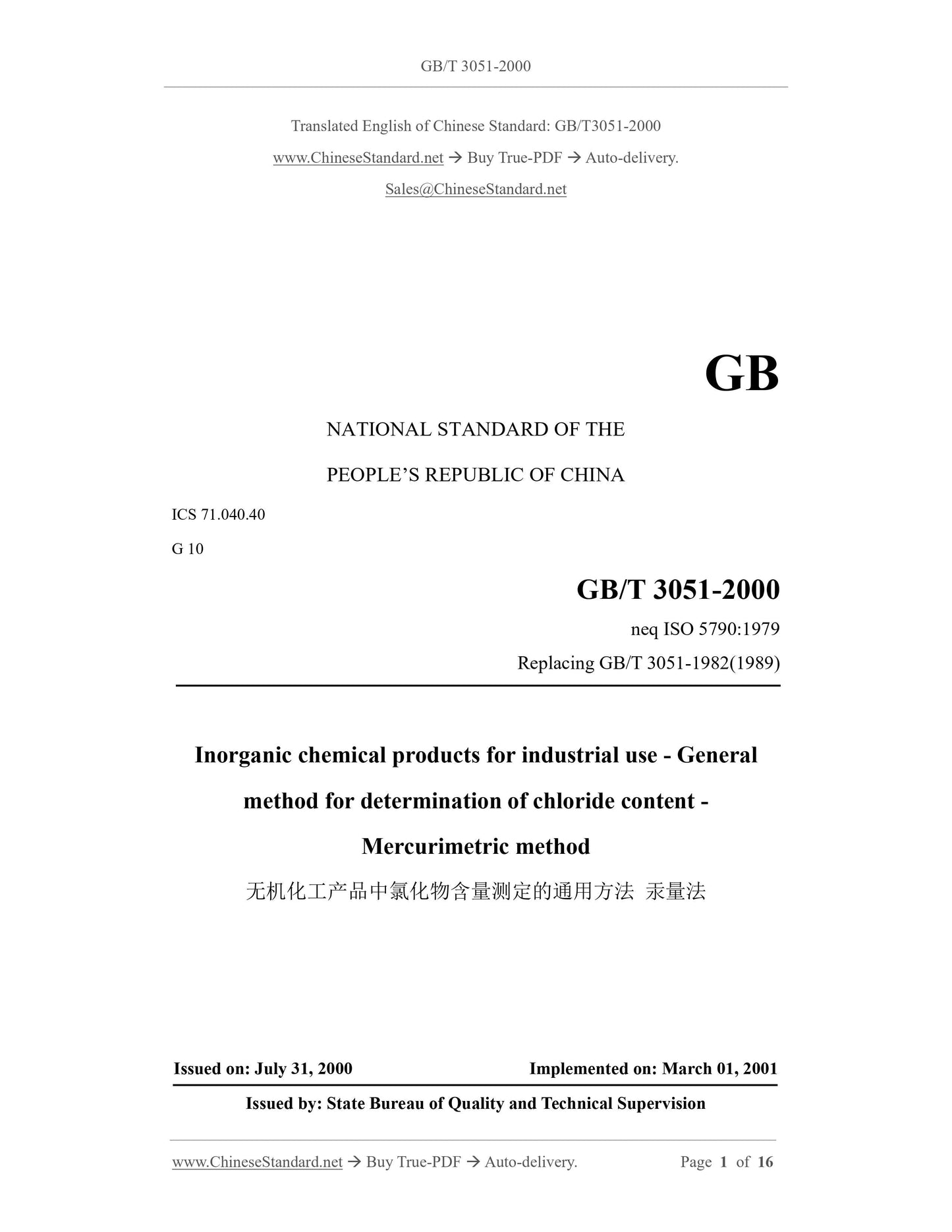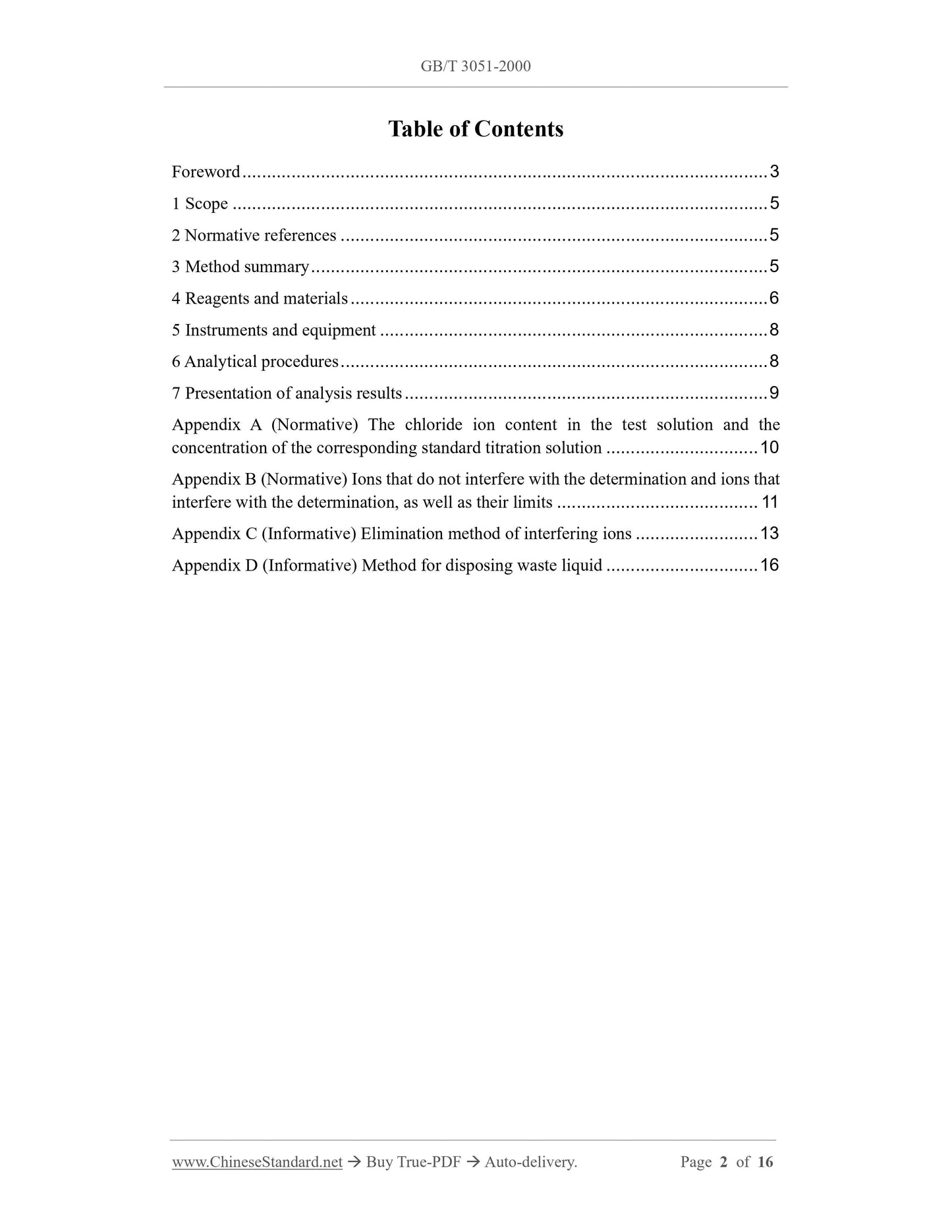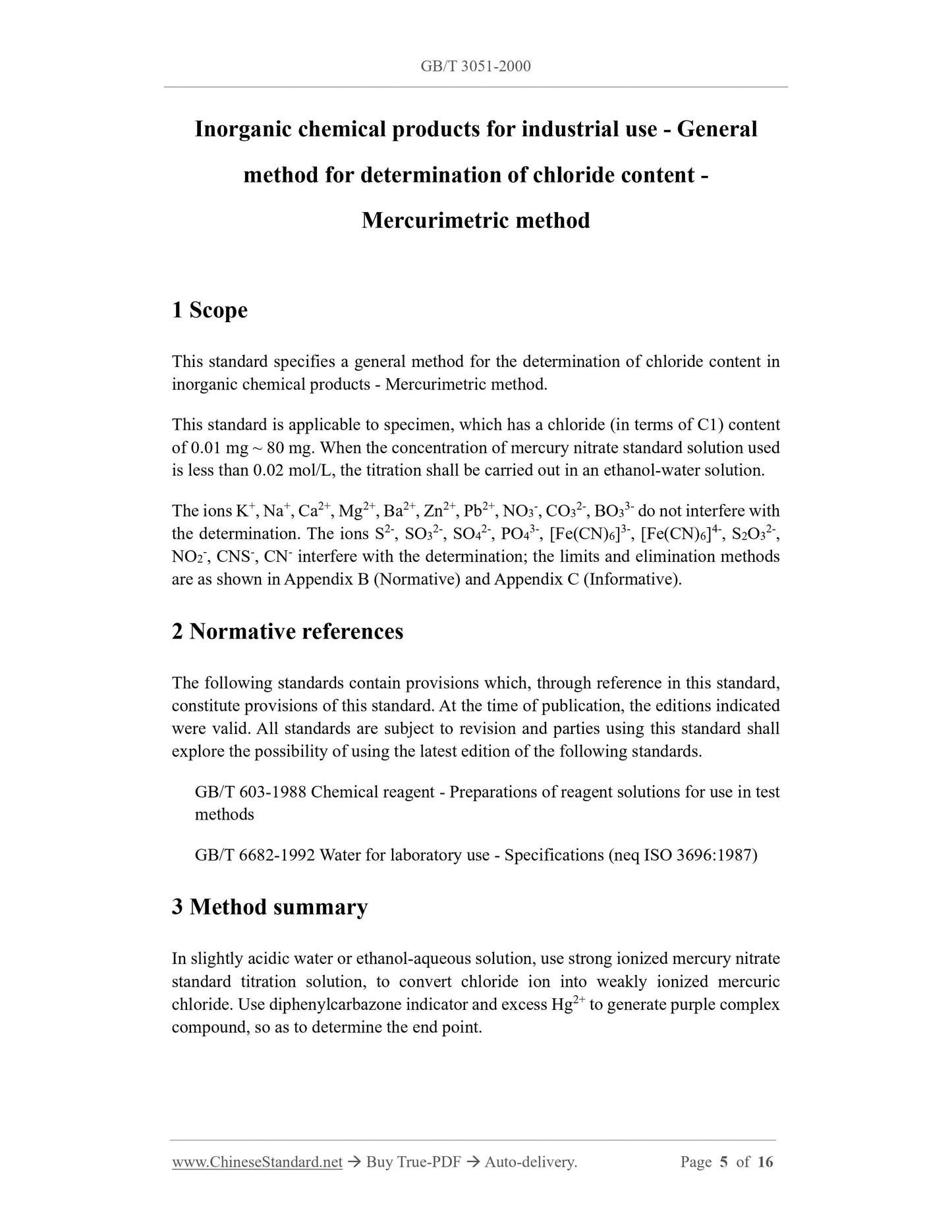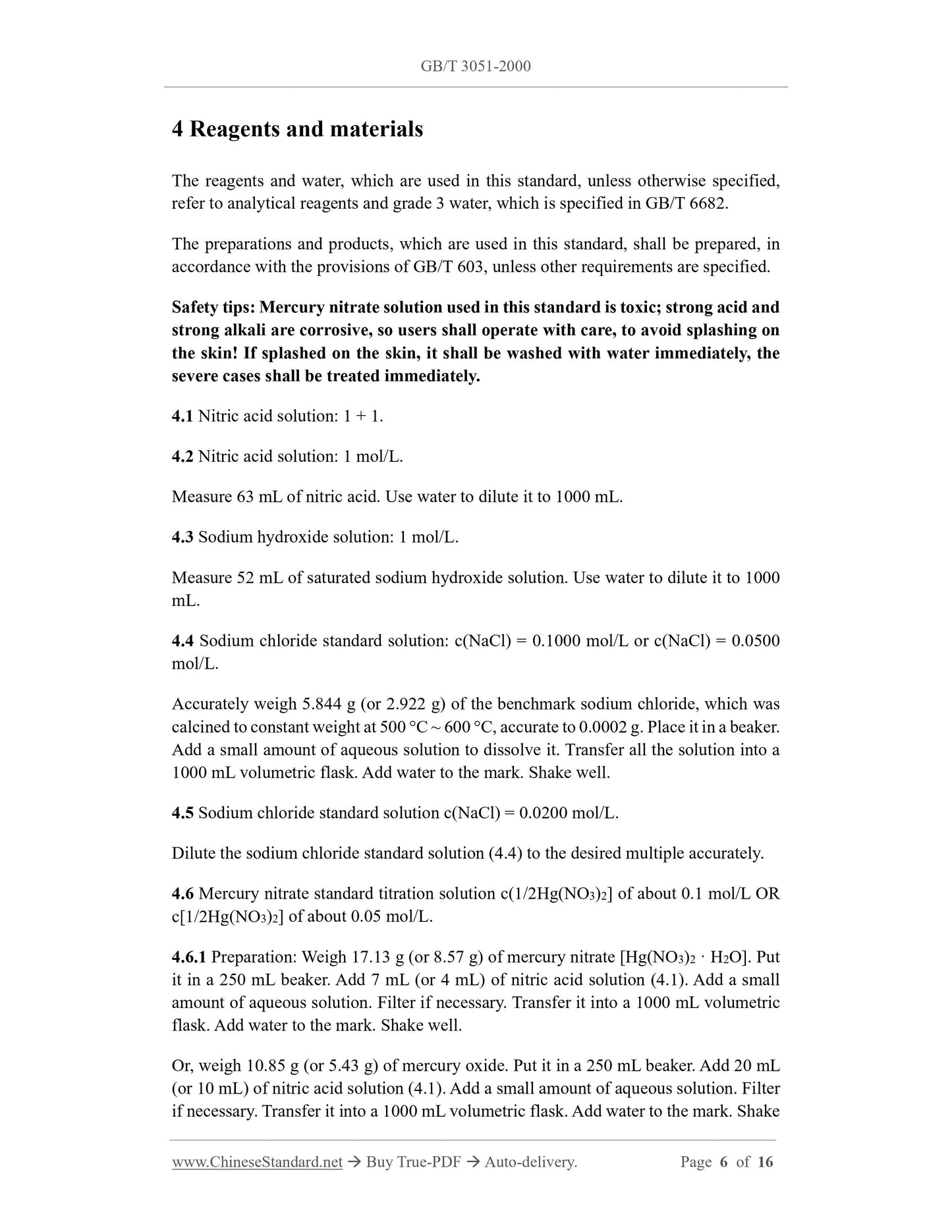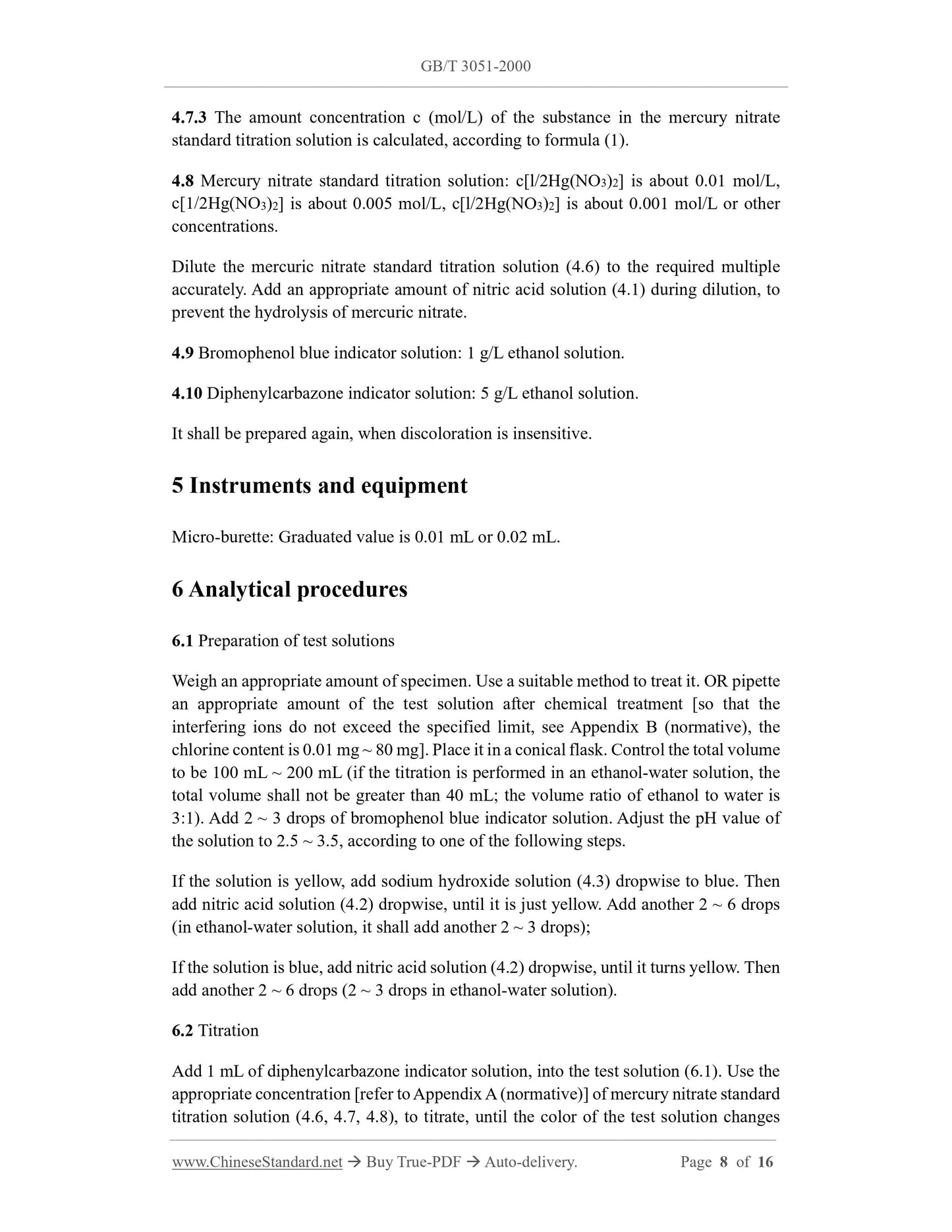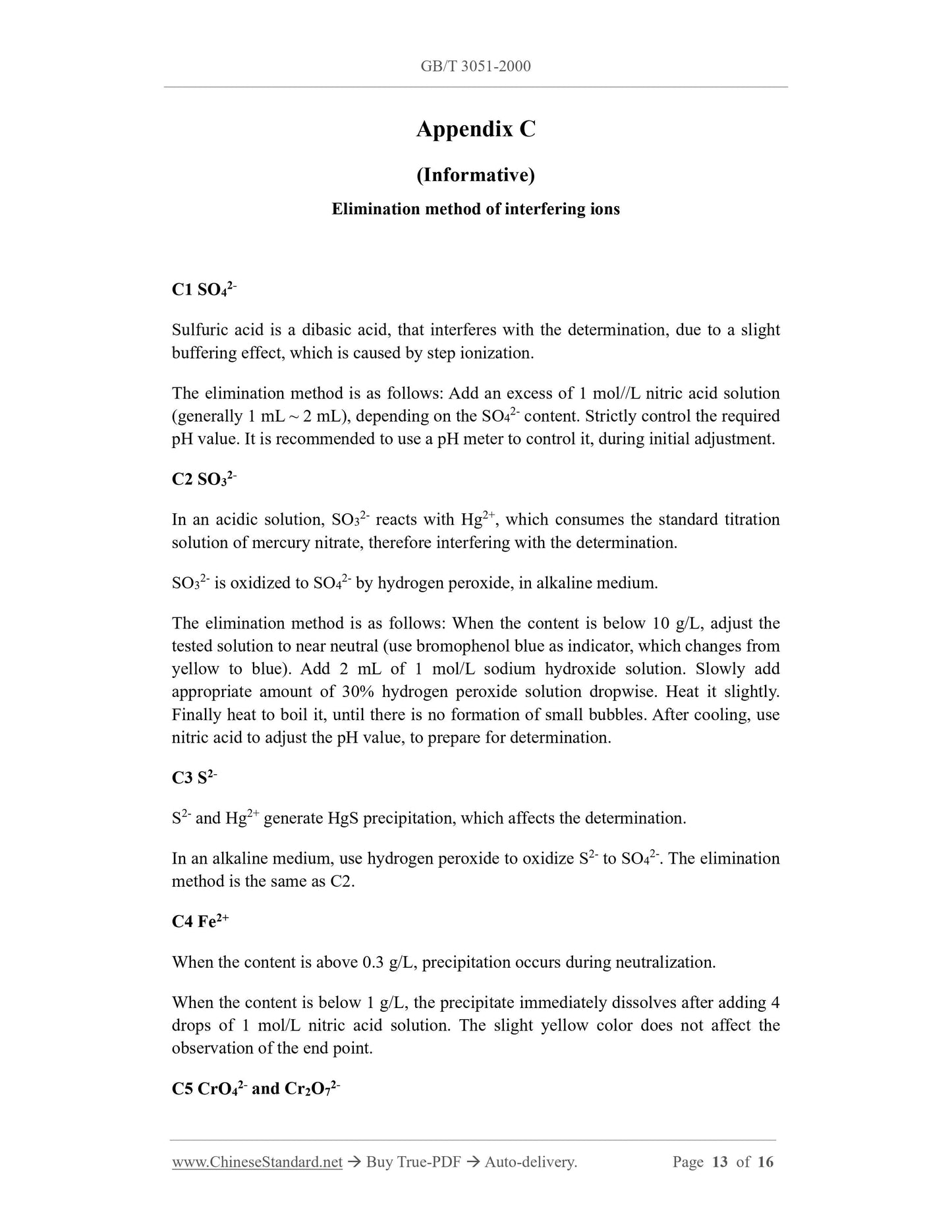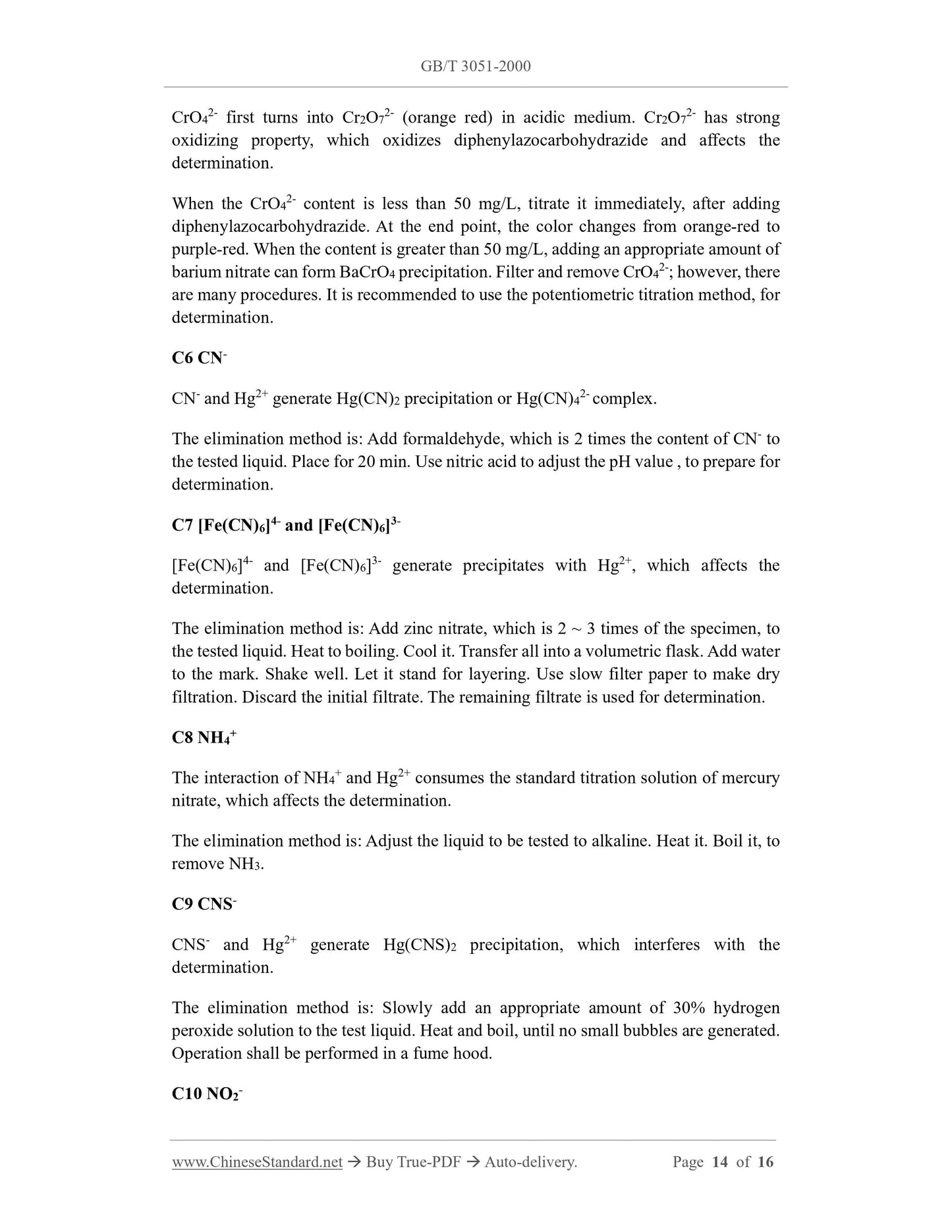1
/
of
7
www.ChineseStandard.us -- Field Test Asia Pte. Ltd.
GB/T 3051-2000 English PDF (GB/T3051-2000)
GB/T 3051-2000 English PDF (GB/T3051-2000)
Regular price
$100.00
Regular price
Sale price
$100.00
Unit price
/
per
Shipping calculated at checkout.
Couldn't load pickup availability
GB/T 3051-2000: Inorganic chemical products for industrial use. General method for determination of chloridecontent. Mercurimetric method
Delivery: 9 seconds. Download (and Email) true-PDF + Invoice.Get Quotation: Click GB/T 3051-2000 (Self-service in 1-minute)
Newer / historical versions: GB/T 3051-2000
Preview True-PDF
Scope
This standard specifies a general method for the determination of chloride content ininorganic chemical products - Mercurimetric method.
This standard is applicable to specimen, which has a chloride (in terms of C1) content
of 0.01 mg ~ 80 mg. When the concentration of mercury nitrate standard solution used
is less than 0.02 mol/L, the titration shall be carried out in an ethanol-water solution.
The ions K+, Na+, Ca2+, Mg2+, Ba2+, Zn2+, Pb2+, NO3-, CO32-, BO33- do not interfere with
the determination. The ions S2-, SO32-, SO42-, PO43-, [Fe(CN)6]3-, [Fe(CN)6]4-, S2O32-,
NO2-, CNS-, CN- interfere with the determination; the limits and elimination methods
are as shown in Appendix B (Normative) and Appendix C (Informative).
Basic Data
| Standard ID | GB/T 3051-2000 (GB/T3051-2000) |
| Description (Translated English) | Inorganic chemical products for industrial use. General method for determination of chloridecontent. Mercurimetric method |
| Sector / Industry | National Standard (Recommended) |
| Classification of Chinese Standard | G10 |
| Classification of International Standard | 71.040.40 |
| Word Count Estimation | 8,876 |
| Date of Issue | 2000-07-31 |
| Date of Implementation | 2001-03-01 |
| Older Standard (superseded by this standard) | GB 3051-1982 |
| Quoted Standard | GB/T 603-1988; GB/T 6682-1992 |
| Adopted Standard | ISO 5790-1979; NEQ |
| Issuing agency(ies) | State Quality and Technical Supervision |
| Summary | This standard specifies: Determination of chloride content of inorganic chemical products General method Mercury Method. This standard applies to: chloride (Cl) content of 0. 01mg-80mg- sample, When using mercuric nitrate standard solution concentration is less than 0. 02mol/L while, titration should be ethanol carried out in aqueous solution. K +, Na +, Ca2 +, Mg2 +, Ba2 +, Zn2 +, Pbt +, NO3-, COs2-, BO32- ions did not interfere with the determination, S2-, S032-, S024 one, PO43-, [Fe (CN) 4] 3 -, [Fe (CN) 4] 4 -, S2O33-, N, 3 -, CNS-, CN- plasma were interfere with the determination, their limits and troubleshooting see Appendix B (standard Appendix) and Appendix C (Tip Appendix). |
Share
